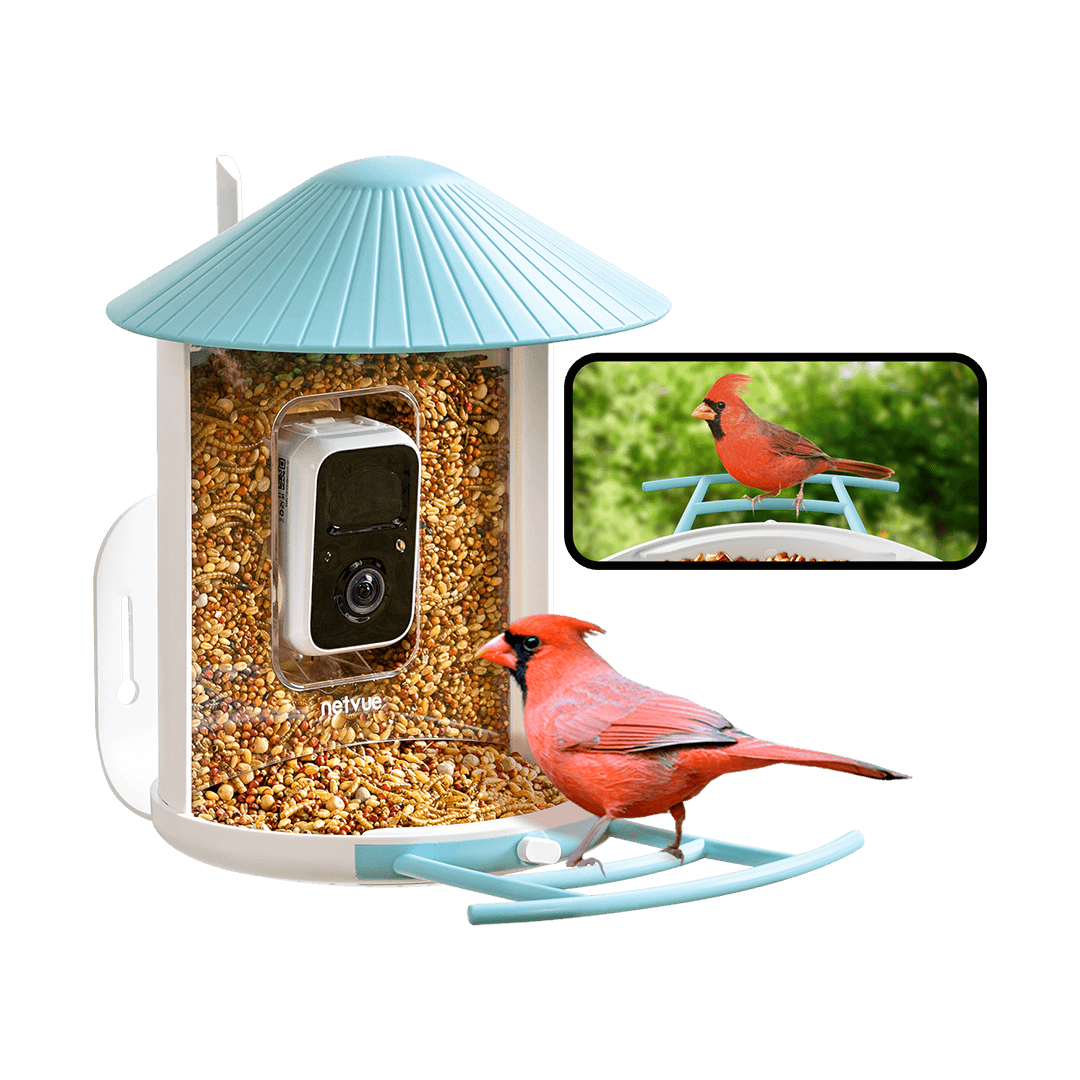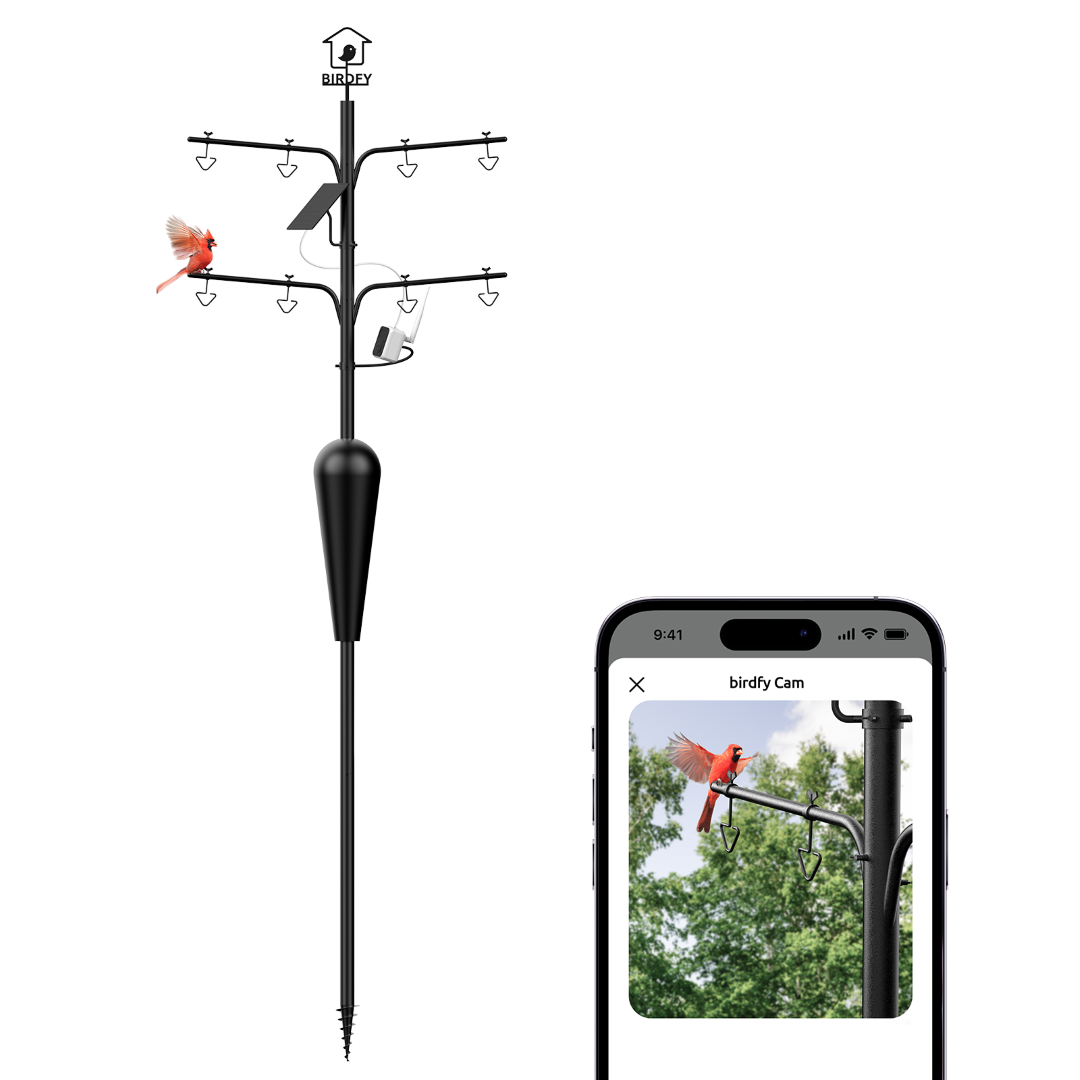Fascinating Facts from the Avian World
1. The Most Widespread
The House Sparrow (Passer domesticus) is one of the most widely distributed and adaptable birds in the world, found on every continent except Antarctica. Native to the Middle East, the House Sparrow has been introduced to many areas by humans and has successfully established populations in urban, suburban and rural areas.
These small birds are distinctive in appearance, with males having gray crowns, black bibs, and chestnut backs, while females are generally dark brown overall. They are known for their chirping calls and active behavior. House finches are highly adaptable and can thrive in a variety of habitats, including cities, towns, farmlands, and grasslands. They are often found near human settlements where they can utilize food sources such as bread crumbs, seeds, and insects.

2. The Smallest Bird
The Bee Hummingbird (Mellisuga helenae) is the world's smallest bird. Found only in Cuba and Isla de la Juventud, this tiny bird is surprisingly light at only 2 to 2.4 inches (5.1 to 6.1 cm) in length and 1.6 to 2 grams in weight.
The Bee Hummingbird's tiny body allows it to move through dense foliage and feed on nectar from the smallest flowers. With its slender beak and specialized tongue, the hummingbird plays an important role as a pollinator in its native ecosystem. Despite its small size, the hummingbird possesses remarkable agility and speed, flapping its wings an astonishing 80 times per second.

3. The Most Talented Singer
The Lyrebird is native to Australia and is known for its exceptional singing ability, especially its talent for mimicry. It belongs to the genus Menura and lives mainly in the dense forests of southeastern Australia. What makes the Lyrebird unique is its ability to mimic a wide range of sounds, not only the calls of other birds, but also human-made sounds such as car alarms, camera shutters and even chainsaws.
One of the most attractive features of the lyrebird is its elaborate, melodious song, which the male usually performs during the breeding season to attract a mate. The male lyrebird's song is a complex mixture of mimicry arranged in fascinating and rhythmic sequences. His repertoire can include the calls of other birds as well as a variety of ambient noises, blending these sounds seamlessly together. In addition, male lyrebirds have long, delicate tail feathers that resemble the shape of a lyre, hence the name. During courtship, these magnificent tail feathers fan out and vibrate in time with the bird's mesmerizing song.


4. The Most Hard Working
The swift is a fascinating bird known for its extraordinary flight abilities and tireless work ethic. This bird belongs to the swiftlet family and is found all over the world, inhabiting environments ranging from cities to remote wildernesses. Swifts are distinguished by their extraordinary flight skills, with streamlined bodies, long wings and efficient metabolisms that keep them in the air for most of their lives.
One of the most remarkable things about swifts is their tireless dedication to feeding and breeding. Swifts are highly agile fliers, capable of flying for long periods of time, often thousands of kilometers on their migratory journeys. They are adept at catching insects in flight, utilizing their wide beaks and special bristles around the beak to bring their prey into their mouths. They can eat, sleep, and even mate while flying, taking advantage of thermal currents to stay aloft with minimal effort.


5. The Most Clever
The great tit (scientific name Parus major) is a small, intelligent bird belonging to the tit family. This charismatic bird is found throughout Europe, Asia, and parts of Africa, and is known for its intelligent behavior, distinctive appearance, and ability to adapt to a wide variety of habitats, from woodlands to cities.
During the breeding season, great tits show remarkable intelligence in choosing nest sites and building nests. They usually choose locations that offer adequate protection from predators and harsh weather conditions, such as tree cavities, nest boxes, or even man-made structures in urban areas.
One of the distinguishing characteristics of the great tit is its problem-solving abilities and its ability to adapt to changing environments. These birds exhibit complex behaviors, including the use of tools and innovative feeding strategies. For example, great tits have been observed using small sticks or twigs to pick up insects from crevices, demonstrating their ability to utilize objects as tools to aid in foraging. Besides, they can use unconventional nesting materials like snake skins to protect their young from predators. They are adept at learning from their surroundings and adapting their behavior to changes in the environment, which makes them very successful and resourceful birds.


6. The Most Social
The Sulphur-crested Cockatoo, scientific name Cacatua galerita, is a notable and intelligent bird native to Australia, New Guinea and nearby islands. The Sulphur-crested Cockatoo is known for its bright yellow crest and snow-white plumage, as well as its unique social dance displays.
During courtship and relationship-building rituals, Sulphur-crested Cockatoos perform engaging dance routines that are both complex and expressive. Often consisting of a series of coordinated movements including wiggling, swaying, and wing-flapping, accompanied by vocalizations, these dance performances are visually striking. Males and females may participate in these dances to strengthen the pair bond and establish a social hierarchy within the flock.
In addition to their dancing abilities, Sulphur-crested Cockatoos are highly social birds that form close-knit flocks, often consisting of tens to hundreds of birds. Within these flocks, they engage in a variety of social interactions, including grooming, feeding, and cooperative breeding.


7. The Most Mammal-Like
Native to New Zealand, the Kiwi is a unique and fascinating bird, known for its mammal-like features despite being a bird. The kiwi bird belongs to the Kiwi family of the pterodactyls, and is flightless, has vestigial wings, and has a very distinctive appearance.
One of the most notable mammal-like features of the kiwi is its small size compared to other birds in a similar ecological niche. Despite being categorized as a bird, the kiwi exhibits a number of characteristics normally associated with mammals. For example, the kiwi has thick, fur-like feathers that protect it from cold New Zealand nights. This fur-like plumage is unique among birds and is one of the reasons why kiwis look like mammals.
Another remarkable mammal-like feature of the kiwi is its behavior. They rely on their sense of smell to locate prey, a trait more commonly found in mammals than birds. Unlike most birds, kiwis are nocturnal and forage primarily at night. They have a keen sense of smell, and their long, sensitive beaks help them probe the forest floor for insects, worms, and other invertebrates.


8. The Most Unusual Bird Bathing
Antbirds belong to the family Thamnophilidae and are found primarily in the neotropical regions of Central and South America. Antbirds have a wide variety of behaviors and characteristics, and one particularly unusual feature is their unique birdbath behavior.
Unlike many other birds, which rely on bodies of water such as rivers, ponds or birdbaths for bathing and grooming, antbirds have developed a unique method of self-cleaning. Instead of water, antbirds often use ant nests or ant colonies as makeshift bird baths. Antbirds are known to perch near ant colonies or ant nests and come into contact with ants crawling on the forest floor. They then use their beaks and wings to disturb the ants, causing them to release formic acid, a natural insect repellent. The antbirds then allow the formic acid to be applied to their feathers to help clean them of parasites and dirt.


9. The Most Direction-Sensed
The pigeon, a member of the Columbidae family, is a highly adaptable bird found throughout the world and is known for its remarkable directional properties. This innate ability, often referred to as homing instinct or pigeon navigation, allows pigeons to find their way home over long distances even when released from unfamiliar locations.
One of the most striking aspects of pigeon navigation is their ability to use the Earth's magnetic field to detect and determine direction. Pigeons have specialized cells in their beaks called magnetoreceptors, which detect the Earth's magnetic field and provide information about their orientation relative to it. This allows pigeons to maintain a consistent course and navigate accurately even in the absence of visual landmarks.
In addition to magnetic cues, pigeons rely on visual landmarks and celestial cues to navigate. They are able to memorize and identify landmarks such as mountains and bodies of water and use them to orient themselves in flight. Pigeons can also detect the position of the sun and use it as a reference point for navigation, especially in clear weather conditions.
Besides, pigeons have an amazing memory for memorizing familiar routes and locations. This cognitive ability, combined with keen sensory perception and navigation skills, enables pigeons to return to their lofts from hundreds of kilometers away with precision and accuracy.

10. The Most Cruel
The Nazca Booby is a seabird native to the Galapagos Islands and its vicinity, known for its striking appearance and unique behavior. Nazca Boobies are primarily known for their distinctive black and white plumage and bright blue feet, but Nazca Boobies are also notable for their seemingly cruel behavior towards their offspring.
During the breeding season, Nazca Boobies gather in flocks to nest and raise their young on rocky cliffs or islands. However, the limited food resources in the ocean around the islands lead to intense competition between individuals for survival. To ensure that at least one offspring survives, Nazca Boobies have evolved a reproductive strategy known as "obligatory sibling rivalry." This strategy involves hatching two chicks, with the first hatchling usually growing larger and stronger than its sibling chicks due to its head start in development. As a result, the older chick usually has an advantage in access to food and parental care, while the younger chick struggles to compete for resources.
In many cases, older chicks actively peck and harass their younger siblings, depriving them of food and ultimately causing their death. While this behavior may seem cruel from a human perspective, it is a natural adaptive strategy in an environment of limited resources that ensures that at least one offspring survives.


11. The Most Efficient Fisher
Kingfishers are small to medium-sized birds with habitats all over the world, from forests and wetlands to coastlines and riversides. They are known for their efficient and precise fishing techniques.
One of the most distinctive features of the kingfisher is its specialized bill, which is long and sharp and dagger-like, making it ideal for fishing. This bill allows the kingfisher to dive quickly and accurately to catch its prey. Kingfishers have keen eyesight and are adept at detecting movement below the surface of the water, spotting fish from high above and diving in to capture them with amazing speed and agility.
Kingfishers employ a variety of fishing techniques depending on habitat and prey behavior. One technique commonly used by kingfishers is the "dive dive", where they dive headfirst into the water from a perched or circling position, usually capturing fish near the surface with unerring accuracy. Kingfishers can also hover at the surface before diving, stabilizing their bodies with their wings to ensure accurate entry into the water. Another technique used by kingfishers is called the "perch-waiting" method of fishing, where they patiently watch for fish from a perch rack overlooking the water. As soon as they spot potential prey, they swoop down to capture it in a swift and furious manner. Some kingfishers also specialize in "fly fishing," which involves skimming the surface of the water in flight to catch small fish or insects.








